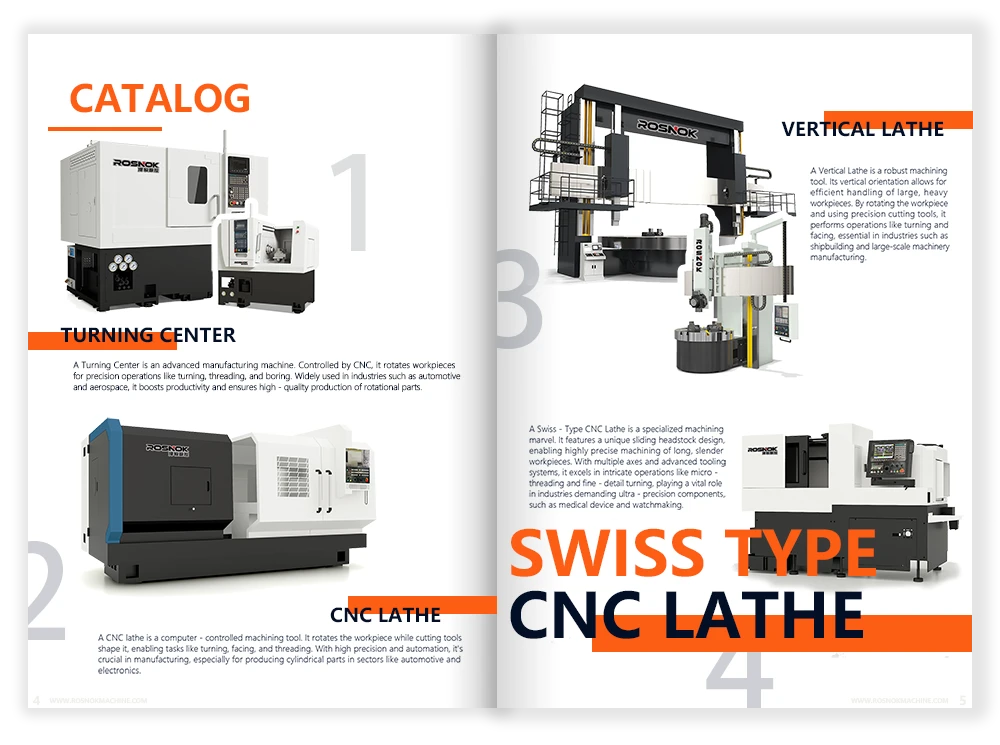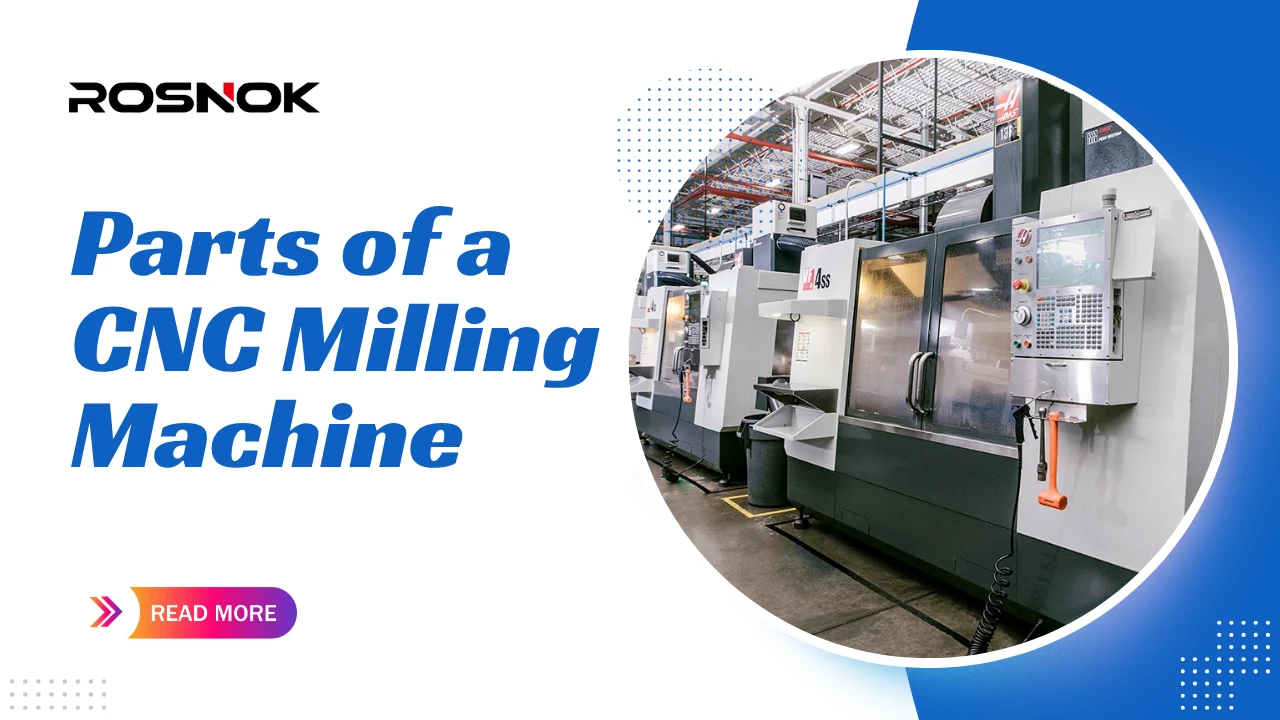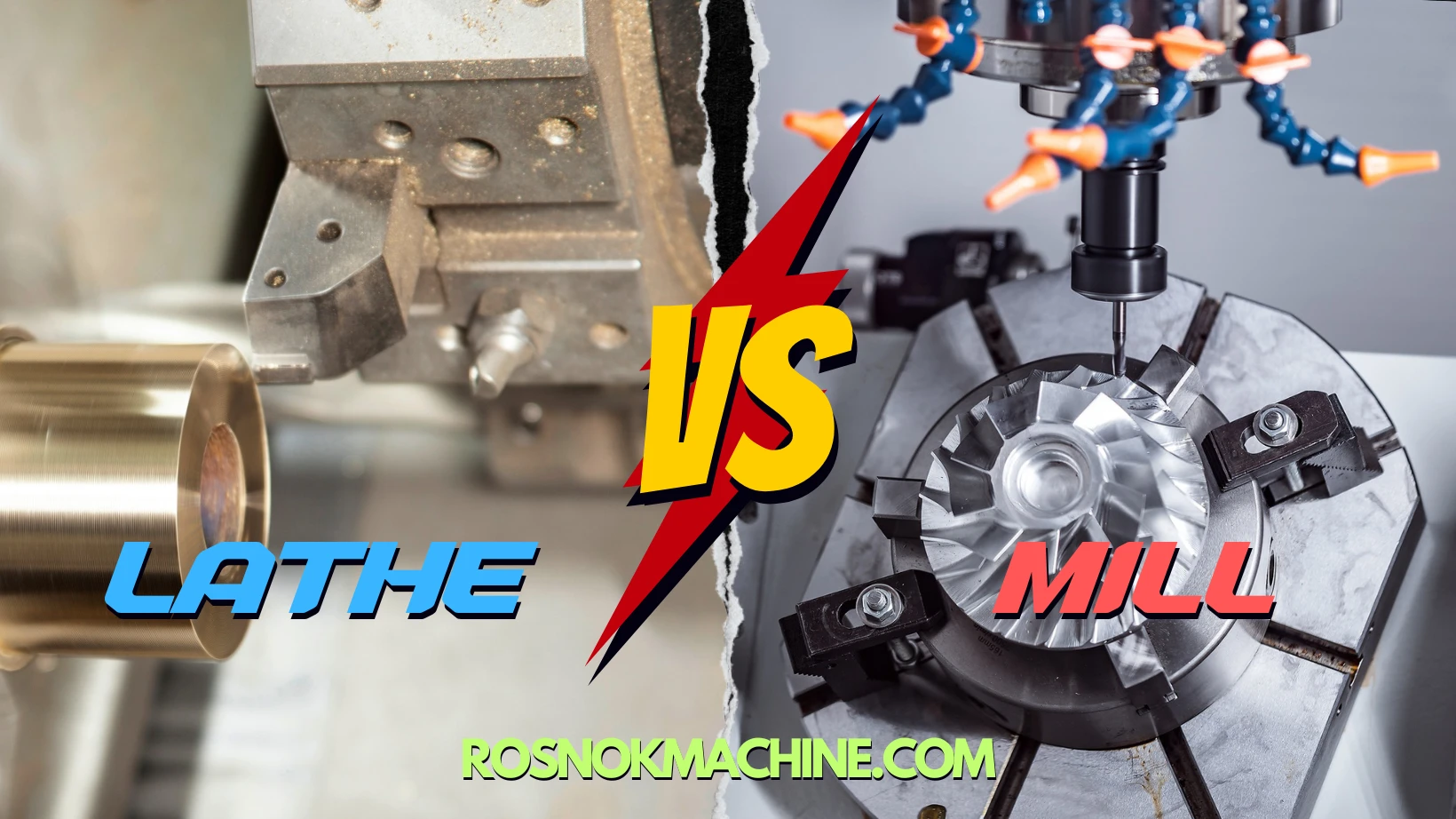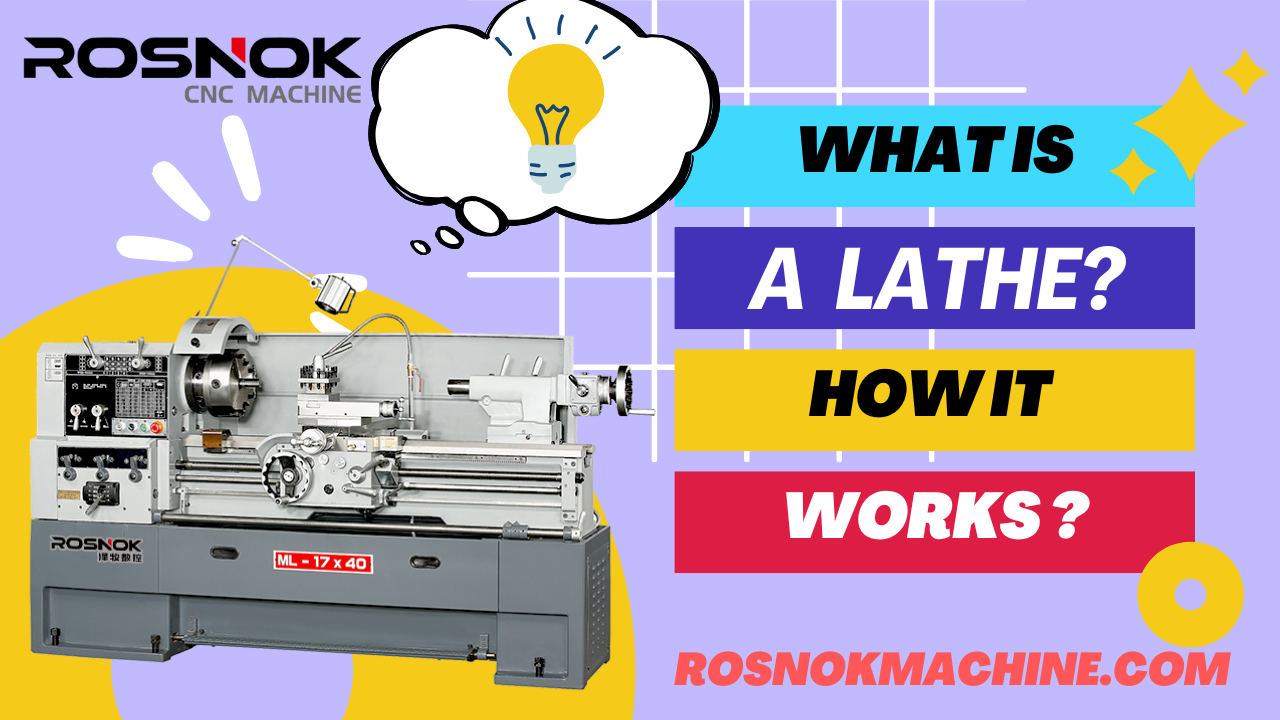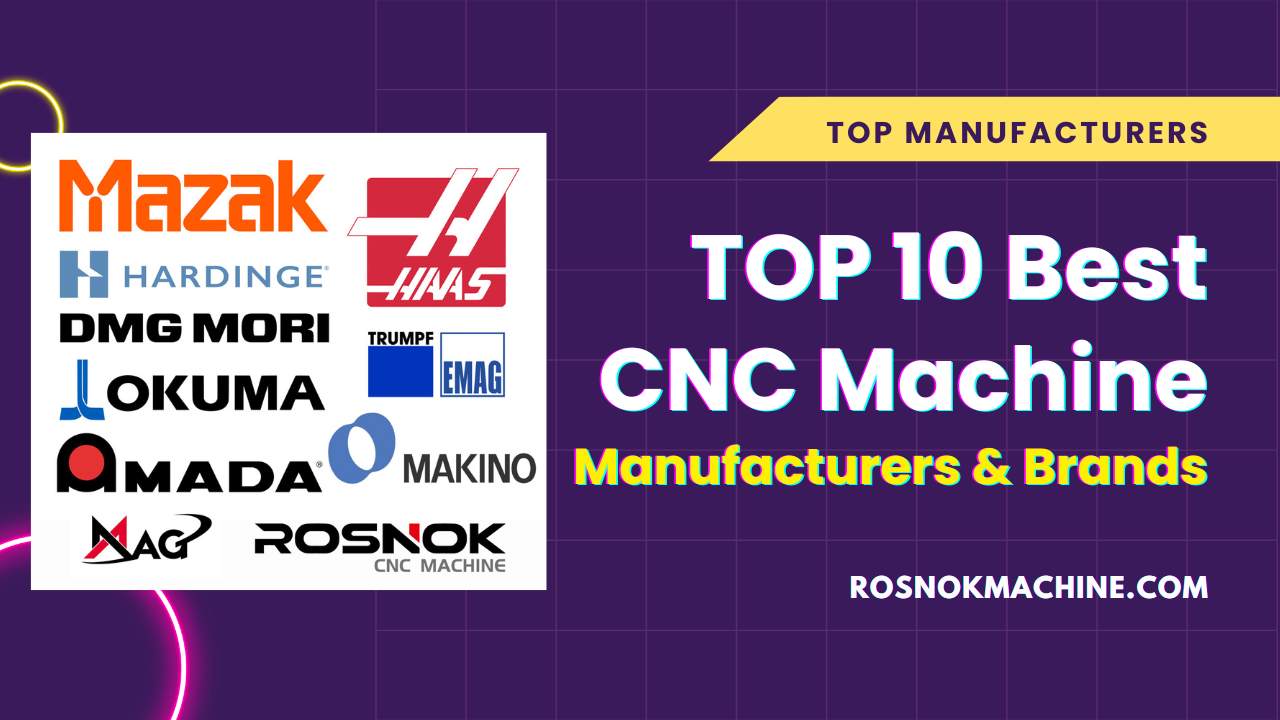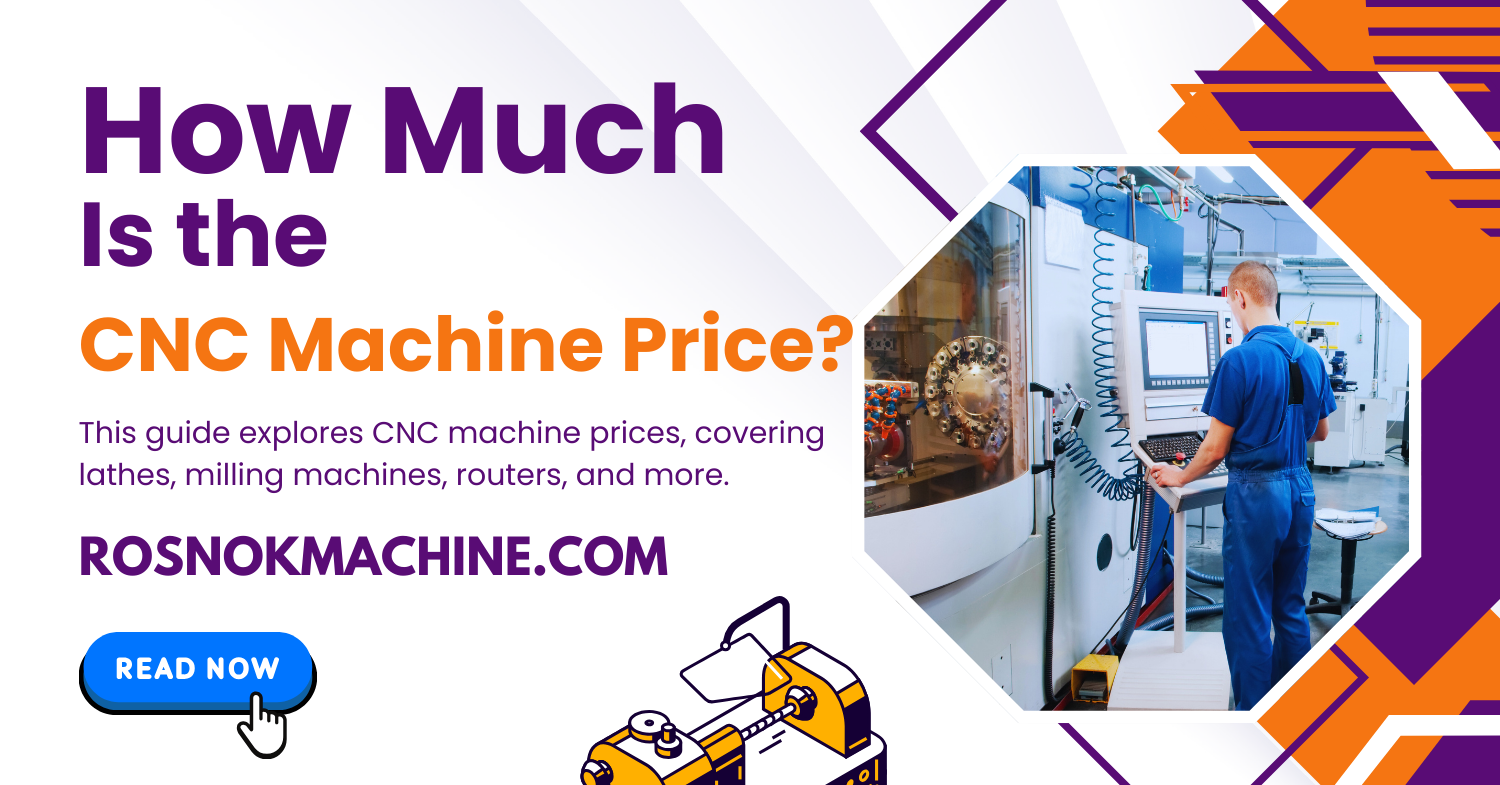What exactly are the parts of a CNC milling machine, and how do they come together to deliver precision and power? When you look at a CNC mill, you see a spindle and a table—but what about the frame, guideways, or control system that keep everything aligned? Understanding these hidden components reveals how accuracy truly begins.
The main parts of a CNC milling machine include the base and column (the rigid frame supporting the structure), the spindle (which rotates the cutting tool), the worktable (where the workpiece is clamped), the feed system (ball screws and guideways that move each axis), the CNC controller (which coordinates all motions), and the automatic tool changer (ATC) (which switches tools quickly for different operations), along with other supporting systems such as cooling, lubrication, and chip removal. Together, these components form a precise and efficient machining system.
Continue reading to discover the essential parts of a CNC milling machine—each one explained clearly to help you understand its structure, purpose, and importance in modern metal machining.
What Is a CNC Milling Machine?
A CNC milling machine is a computer-controlled machine tool used for shaping metal and other solid materials with high precision. Unlike a traditional manual mill, it operates through programmed commands that control the movement of cutting tools along multiple axes. This automation allows for consistent accuracy, repeatability, and efficiency even in complex or high-volume production tasks.
At its core, a CNC milling machine transforms digital design data into precise physical components. The process involves a rotating cutting tool that removes material from a fixed workpiece to create desired shapes and features. Modern models include advanced controllers, automatic tool changers, and real-time monitoring systems for greater productivity and precision.
In industrial manufacturing, CNC milling machine components such as the spindle, worktable, and controller work together to deliver high-speed, multi-axis machining performance. Whether used in aerospace, automotive, or medical industries, these machines define the standard for precision metal fabrication today.
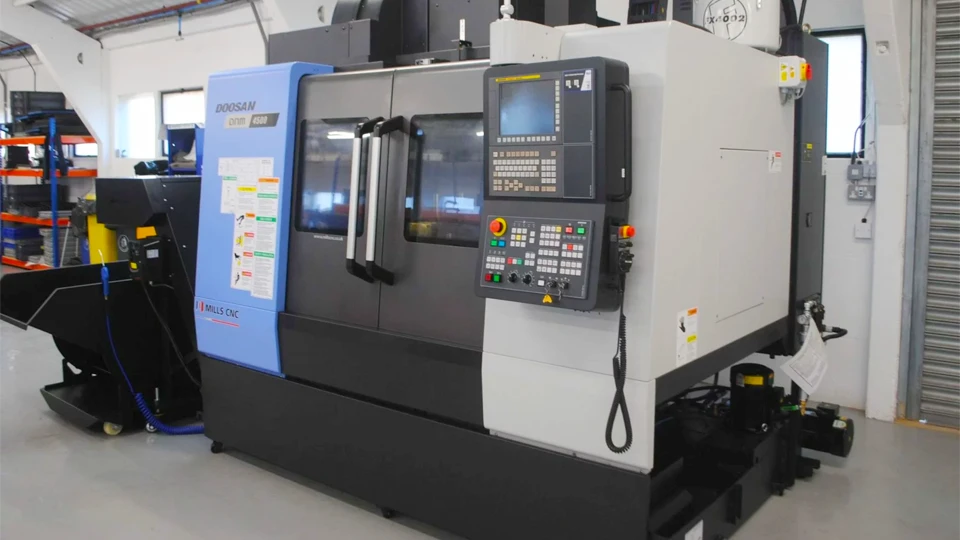
Main Parts of a CNC Milling Machine
A CNC milling machine is made up of several major sections, each performing a specific function that contributes to the overall precision and stability of the machine. The main parts of a CNC milling machine include its structural foundation, motion systems, control units, and automatic accessories. Understanding these components helps engineers and operators recognize how the machine is built and how its performance depends on mechanical design and system integration.
In the following sections, we’ll take a closer look at each key component—from the base and column to the spindle, worktable, and automatic tool changer—to clearly understand their form and purpose in a modern CNC milling setup.
Base and Column – The Structural Foundation
The base and column form the backbone of a CNC milling machine. Built from heavy cast iron or high-strength steel, they provide the rigid foundation that supports every other component. The base houses the coolant reservoir and sometimes the chip collection area, while the column rises vertically to hold the spindle head and guideways.
Together, these two structural elements absorb cutting vibrations and maintain alignment during high-speed operations. Their rigidity determines how accurately the machine can maintain tolerances under load. A well-designed base and column reduce thermal deformation, prevent deflection, and ensure the entire machining system remains stable even in continuous production.
In modern designs, ribbed internal reinforcements and precision-ground guide surfaces enhance stiffness and long-term durability. Simply put, the quality of the base and column defines the overall precision and longevity of a CNC milling machine.
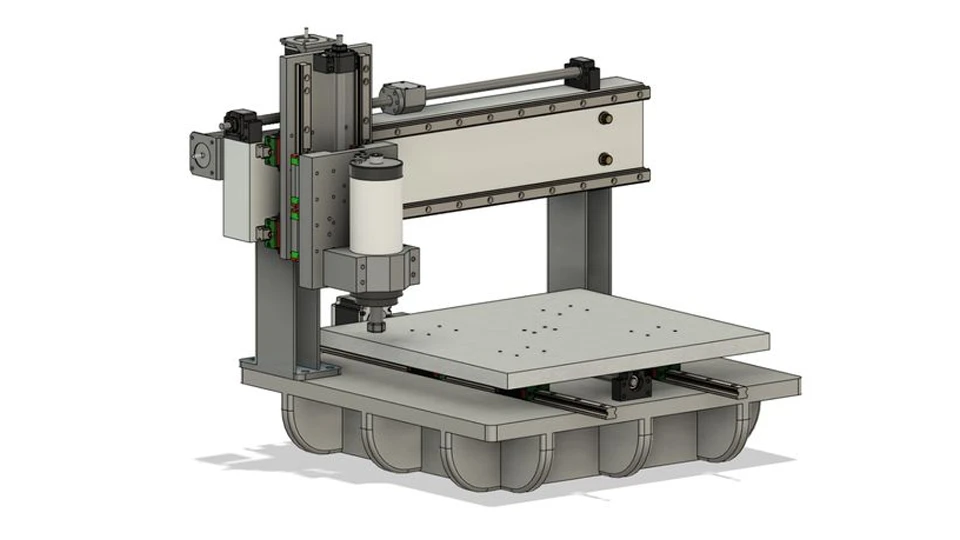
Saddle and Knee – The Vertical Support Elements
The saddle and knee are essential structural components of a CNC milling machine that connect the worktable to the base and column. The knee moves vertically along the column, supporting the saddle and table assembly, while the saddle itself allows horizontal motion—typically in the Y-axis. Together, they provide the mechanical link between the table and the main frame, ensuring precise movement and stable support during milling operations.
Constructed from high-grade cast iron and precisely machined, these parts of a CNC milling machine maintain rigidity while allowing smooth, controlled motion. The knee carries the combined weight of the table, fixtures, and workpiece, so its design must ensure both strength and smooth lifting capability. A precision-fit saddle enables fine alignment and minimizes vibration, helping maintain accuracy even under heavy cutting loads.
In short, the saddle and knee act as the stabilizing bridge between structure and motion. Their balance of strength and mobility directly affects surface finish quality and overall machining precision.
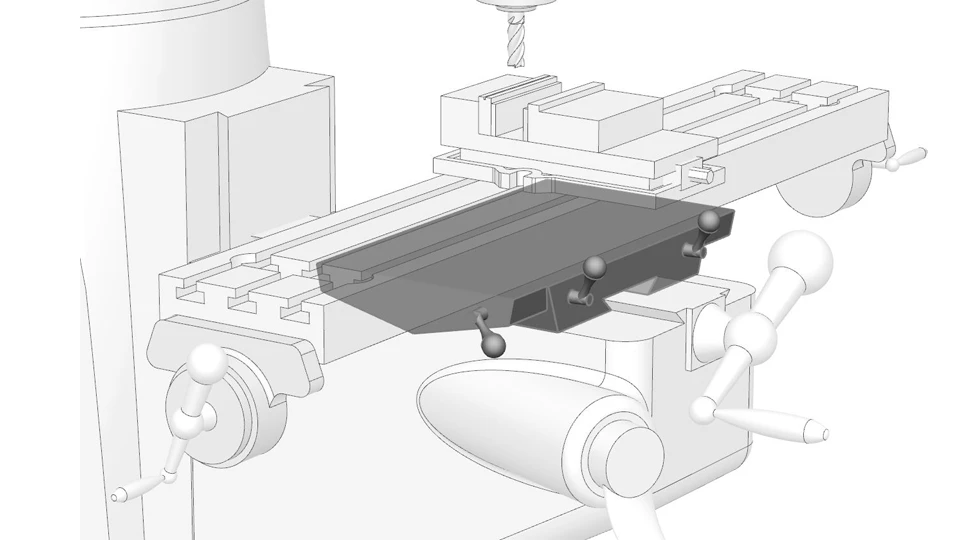
Spindle – The Rotational Power Center
The spindle is the core component of a CNC milling machine, delivering controlled rotational speed and torque to the cutting tool. In VMCs and HMCs, the spindle is housed in a spindle head (cartridge design) mounted on the column or ram (Z-axis), enabling precise vertical motion. It runs on matched angular-contact bearings—often hybrid ceramic at higher speeds—with carefully managed preload to minimize runout and heat.
Drive configurations include belt, gear, and direct-drive electric spindles. Belt drives are cost-efficient and forgiving, gear drives supply high torque for heavy cuts, and direct-drive units offer superior accuracy with low vibration. Beyond bearings, high-speed stability depends on the toolholder interface (BT/HSK/BT-BIG-Plus), dynamic balance, coolant/lubrication and thermal control, and the stiffness of the spindle head–column assembly.
Modern spindle systems integrate automatic tool clamping, drawbar force monitoring, and temperature/ vibration sensing for predictive maintenance. In practice, spindle precision and rigidity largely determine achievable surface finish, tool life, and throughput—making the spindle one of the most consequential cnc milling machine parts to evaluate.
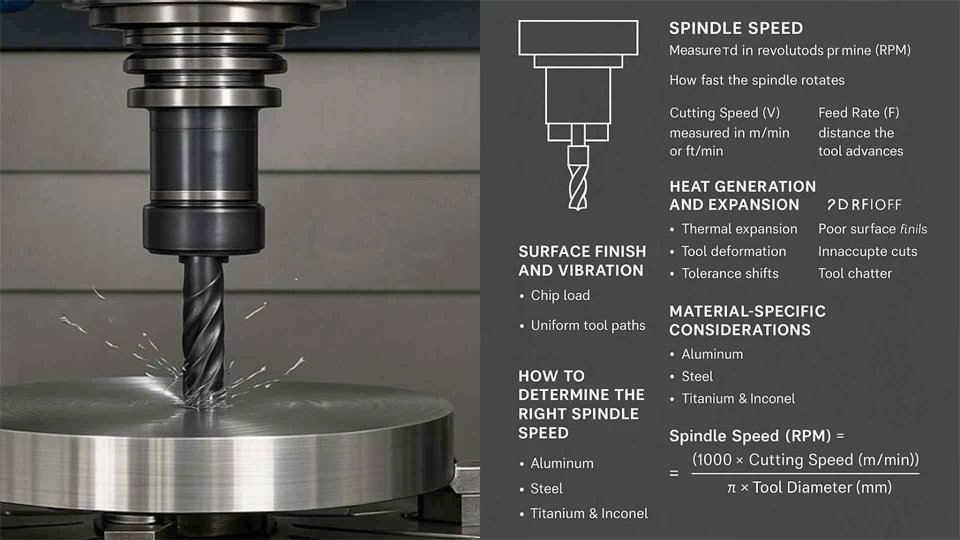
Worktable – The Precision Platform
The worktable is one of the most recognizable and functional parts of a CNC milling machine. It serves as the platform that holds and positions the workpiece during machining. Designed with a precision-ground surface, the table provides accurate alignment for fixtures, vises, and clamping devices. T-slots or grid holes are commonly used for flexible and secure mounting.
The worktable moves along the X and Y axes, driven by the feed system beneath it. Its travel limits define the machine’s effective machining area. A sturdy and well-balanced table must support not only the workpiece’s weight but also withstand cutting forces without deflection. For larger machines, tables are often equipped with additional support structures or hydrostatic bearings to maintain accuracy under heavy loads.
Modern cnc milling machine components include rotary or tilting tables for multi-axis operations, allowing angular positioning and complex contour machining. The surface finish, parallelism, and rigidity of the worktable directly influence machining precision and dimensional consistency—making it a fundamental element in every high-performance CNC milling setup.
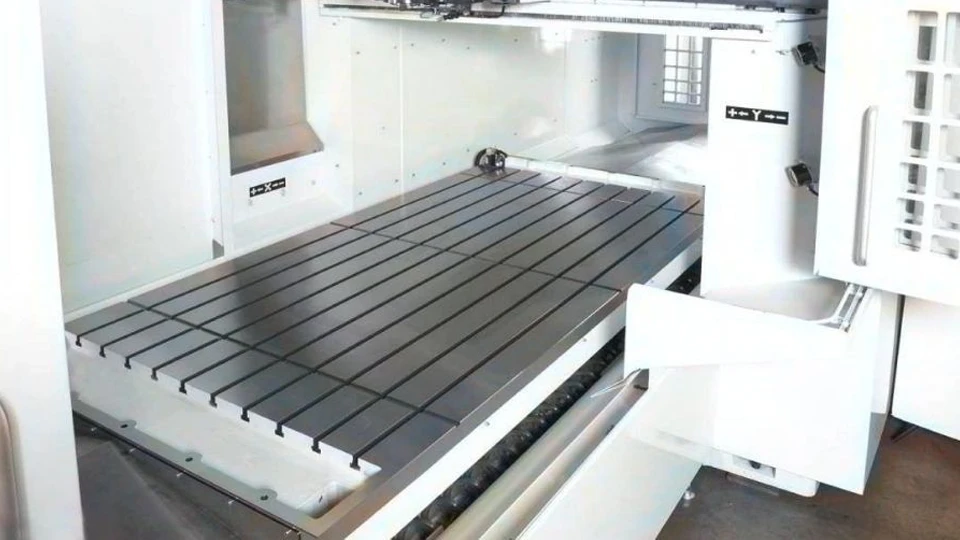
Feed System – Axis Drive and Motion Mechanism
The feed system is the driving force that enables controlled movement along the X, Y, and Z axes of a CNC milling machine. It translates programmed commands from the controller into precise linear or rotary motion, positioning the cutting tool and worktable exactly where they need to be. Among the main components of a CNC milling machine, the feed system directly determines machining accuracy, speed, and repeatability.
This system typically consists of servo motors, ball screws, and linear guideways. The servo motors provide rotational power, which is converted into linear motion through precision-ground ball screws. Linear guideways or box ways ensure smooth, friction-minimized movement while maintaining rigidity. Each axis includes an encoder or feedback device to verify position and correct any deviation in real time.
High-quality feed systems reduce backlash, improve surface finish, and allow for faster cycle times. In advanced cnc milling machine components, hybrid drive technologies and digital feedback loops further enhance dynamic response and stability. A well-tuned feed system ensures the entire machining process runs smoothly, delivering consistent performance across all operations.
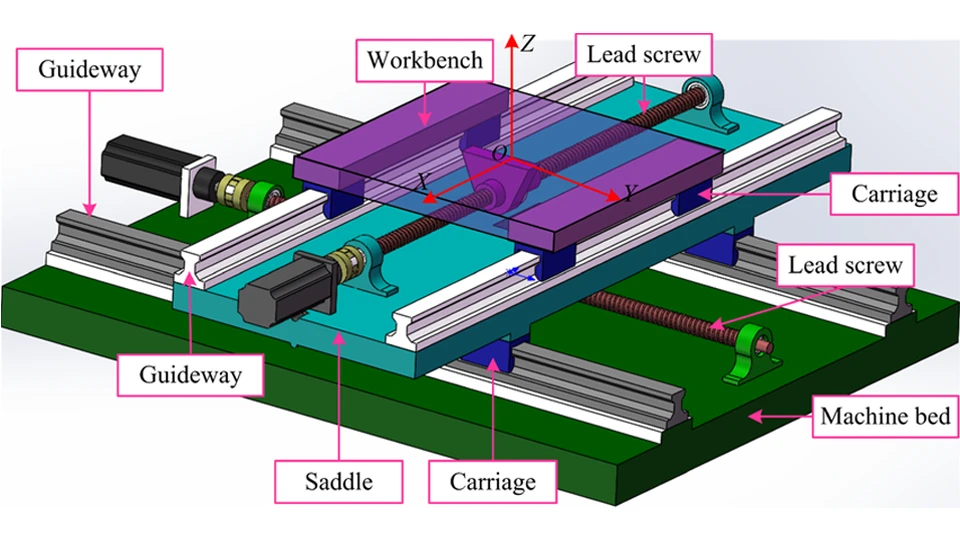
CNC Controller – The Command and Control Unit
The CNC controller is the brain of the milling machine, responsible for interpreting coded instructions and converting them into precise movements. It coordinates every axis, motor, and subsystem, ensuring that the machine executes the programmed toolpaths with exact timing and accuracy. Among the main parts of a CNC milling machine, the controller defines how intelligently and efficiently all other components perform together.
A typical controller consists of a central processing unit (CPU), memory modules, input and output interfaces, and communication links to servo drives and sensors. It processes G-code, calculates axis positions, adjusts feed rates, and compensates for thermal or mechanical errors. Many modern controllers include touch-screen interfaces, built-in diagnostics, and remote connectivity that allows real-time monitoring and maintenance.
Advanced systems from brands such as Fanuc, Siemens, or Mitsubishi support high-speed interpolation, multi-axis synchronization, and adaptive control. They also manage safety interlocks and power sequences for smooth operation. The precision and capability of the CNC controller determine not just part quality but overall machine productivity, making it one of the most vital cnc milling machine components in modern manufacturing.
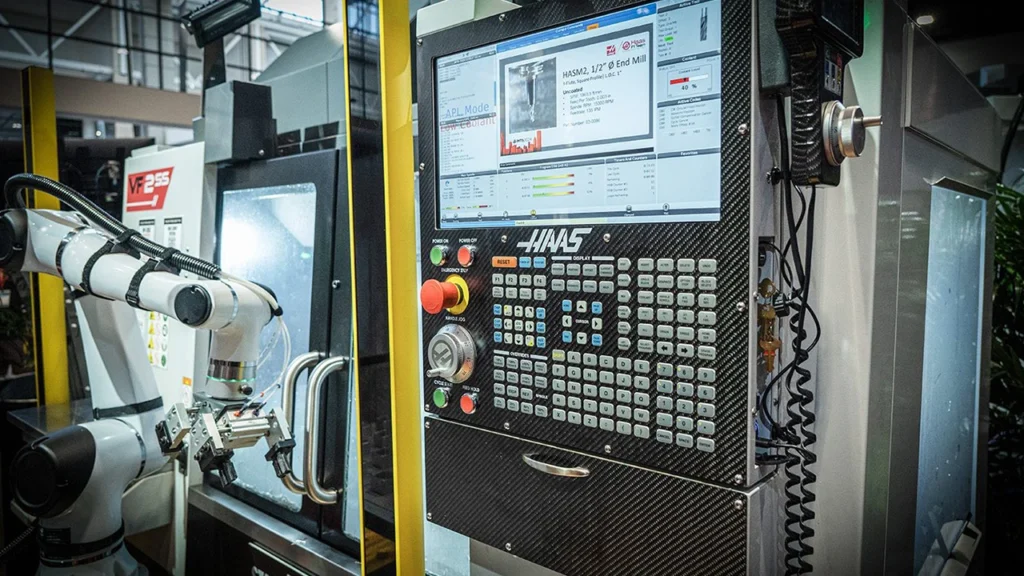
Automatic Tool Changer (ATC) – The Tool Management System
The automatic tool changer, or ATC, is one of the most innovative and time-saving components of a CNC milling machine. Its primary role is to automatically exchange cutting tools between machining operations, eliminating manual intervention and dramatically reducing downtime. This automation enables continuous production and allows complex parts to be machined in a single setup with minimal operator input.
The ATC system typically consists of a tool magazine or carousel that stores multiple tools, a robotic arm or swing-type mechanism that transfers tools, and an air- or hydraulically-driven actuator that locks and unlocks the spindle. Depending on the machine size and design, tool magazines may hold anywhere from 10 to over 200 tools. Advanced configurations, such as chain or matrix magazines, support faster indexing speeds for high-volume production environments.
By integrating with the CNC controller, the ATC ensures each tool is selected precisely when needed, based on programmed tool numbers. This synchronization improves efficiency, repeatability, and process flexibility. For manufacturers, the ATC is not just a convenience—it’s an essential part of a CNC milling machine that boosts productivity, reduces human error, and keeps production lines running smoothly.
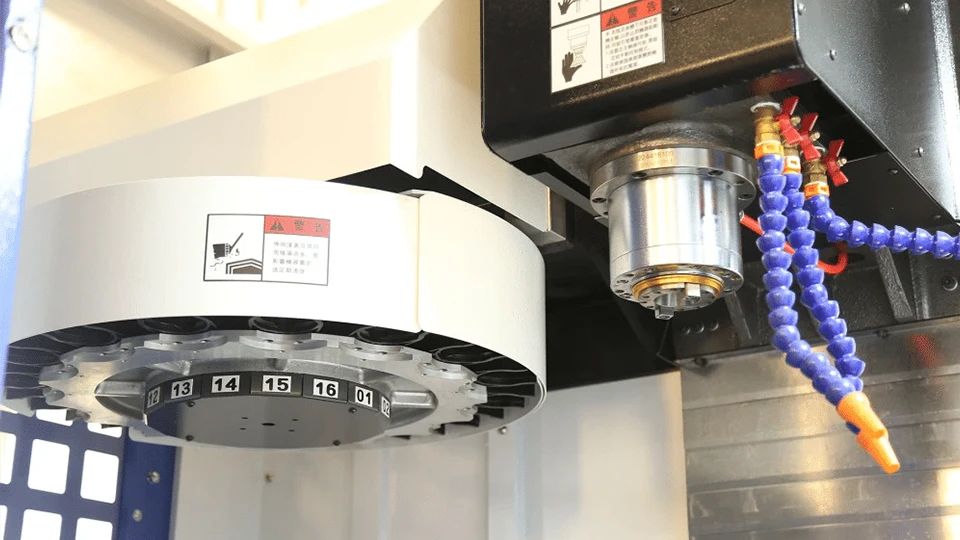
Coolant and Lubrication System – The Thermal Control Network
The coolant and lubrication system is one of the main components of a CNC milling machine that ensures stable performance during long machining cycles. Its purpose is twofold: to remove heat generated by the cutting process and to minimize friction between moving parts. Without proper cooling and lubrication, tool life decreases rapidly, dimensional accuracy suffers, and the entire system becomes prone to premature wear.
Coolant is typically delivered through nozzles or internal channels directly to the cutting zone, carrying away chips and maintaining an optimal temperature. Different coolant types—water-soluble emulsions, synthetic fluids, or oil-based coolants—are chosen depending on the material and machining speed. The lubrication subsystem continuously supplies oil or grease to guideways, ball screws, and bearings, ensuring smooth motion and reducing resistance.
Modern cnc milling machine components integrate automated coolant pumps, pressure regulators, and mist or through-spindle cooling options. Centralized lubrication systems are now computer-controlled, adjusting flow based on cycle time and temperature feedback. Together, these systems keep the machine running efficiently and protect critical parts of a CNC milling machine from excessive heat, friction, and mechanical stress.
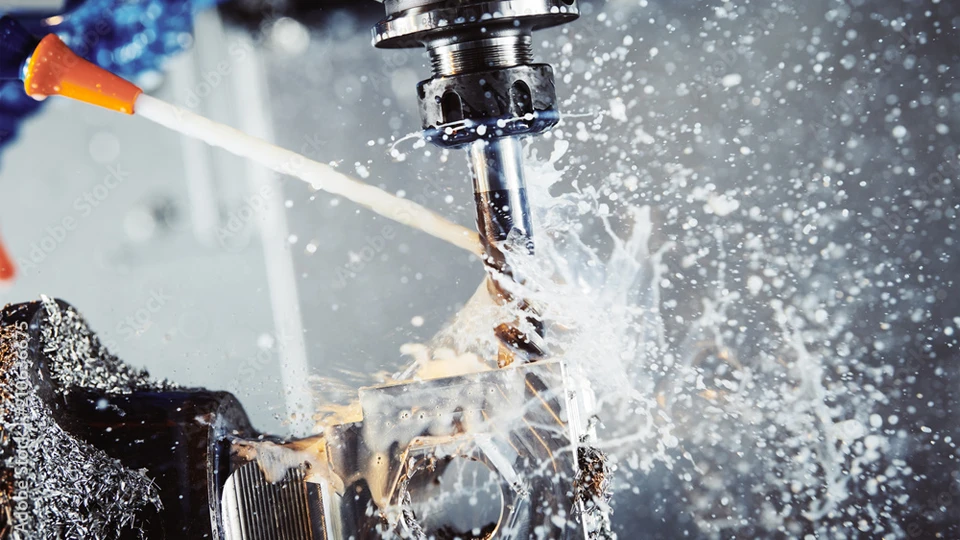
Chip Removal System – Clean and Efficient Operation
The chip removal system plays a crucial yet often overlooked role among the main parts of a CNC milling machine. During milling, large volumes of metal chips are generated, and if not cleared efficiently, they can damage the workpiece surface, cause tool wear, or even clog the coolant flow. The chip removal system ensures that chips are continuously evacuated from the cutting area, keeping the machine clean, safe, and productive.
A typical setup includes chip conveyors, augers, or flushing nozzles that direct chips toward a collection point. Depending on the machine size and material type, systems may use magnetic, screw, or scraper conveyors to handle different chip forms—from fine aluminum dust to heavy steel curls. Some modern cnc milling machine components incorporate sensors that monitor chip buildup and automatically adjust flushing pressure or conveyor speed.
Effective chip removal improves heat dissipation, prevents tool interference, and enhances operator safety. For high-volume production, integrated chip compactors and filtering units can recycle coolant and reduce waste. In short, a reliable chip removal system is not just an accessory but an essential component of cnc milling machine efficiency and long-term performance.
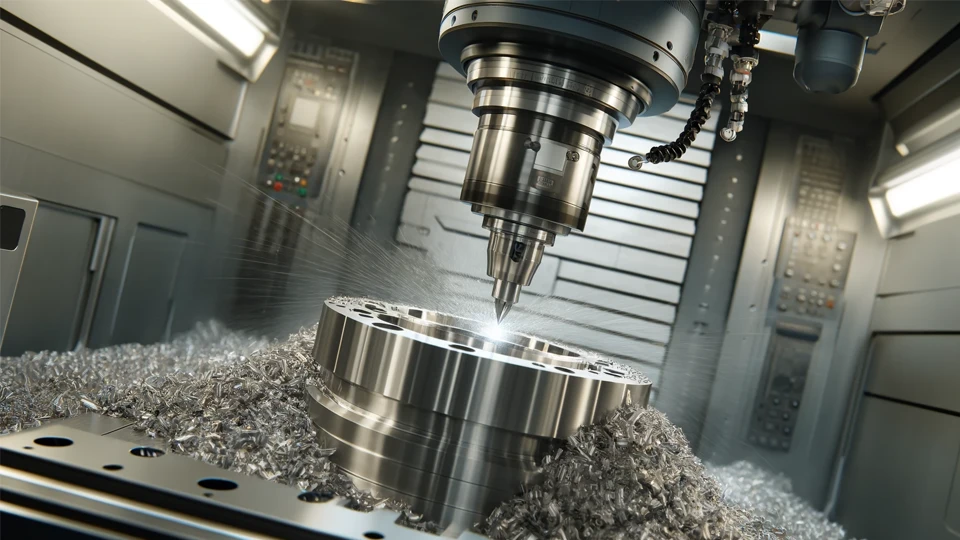
Electrical Cabinet and Power System – The Energy Core
The electrical cabinet and power system form the central energy hub of a CNC milling machine. This system distributes and regulates power for all major assemblies, from the spindle motor to the control circuits. As one of the main components of a CNC milling machine, it ensures that every subsystem receives clean, stable, and reliable electrical energy to maintain consistent operation and precision.
The electrical cabinet typically houses servo drives, variable-frequency drives (VFDs), circuit breakers, power supplies, and control relays. Each element is carefully arranged and cooled to prevent overheating. Proper grounding and insulation are critical to protect sensitive cnc milling machine components from electrical noise or voltage fluctuations. Many modern machines use intelligent power management systems that monitor energy consumption, automatically shut down idle sections, and diagnose faults in real time.
The power system also includes transformers, cables, and connectors that link the electrical cabinet to motors, sensors, and peripheral devices. Its design determines the safety and longevity of the entire system. In essence, a well-engineered electrical and power network supports not only machine stability but also operational efficiency, making it an indispensable part of a cnc milling machine in any production environment.
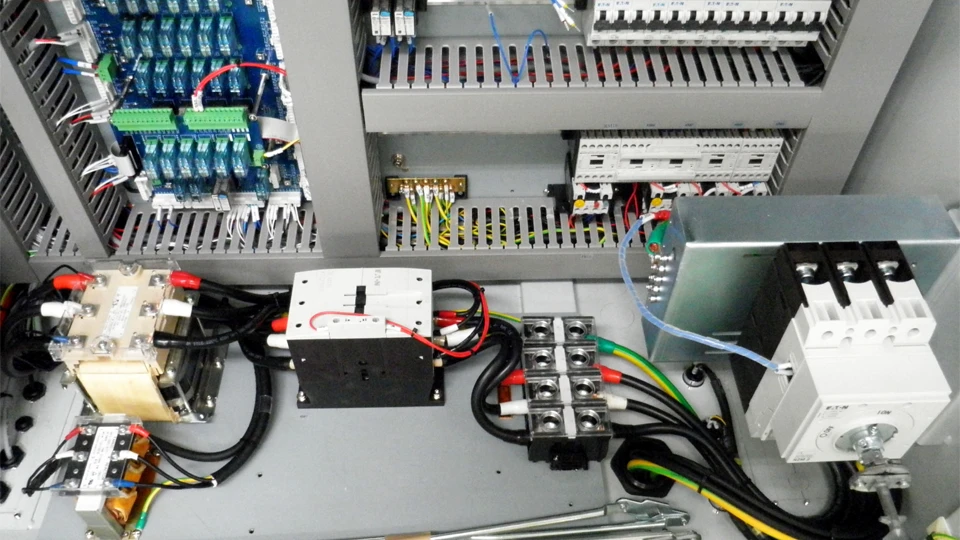
Enclosure and Safety Guards – The Protection Shell
The enclosure and safety guards are among the most visible yet often underestimated parts of a CNC milling machine. While they do not directly affect cutting accuracy, their role in operator safety and overall machine integrity is critical. The enclosure seals the machining area, containing chips, coolant, and noise, while providing a controlled environment that supports clean and efficient operation.
Safety guards, including interlocked doors and transparent windows, protect operators from flying debris and coolant spray. Modern designs use polycarbonate or laminated glass for visibility and strength, allowing technicians to safely observe machining without exposure to hazards. Additionally, many cnc milling machine components integrate automatic door sensors that stop motion instantly when the guard is opened, ensuring compliance with international safety standards such as CE and ISO.
Beyond protection, a well-designed enclosure improves thermal control by isolating the machining zone from external temperature fluctuations. It also contributes to a quieter, cleaner workspace and simplifies chip and coolant management. For manufacturers, these systems are more than safety accessories—they are essential cnc milling machine parts that preserve operator wellbeing, extend machine life, and maintain the quality of the working environment.
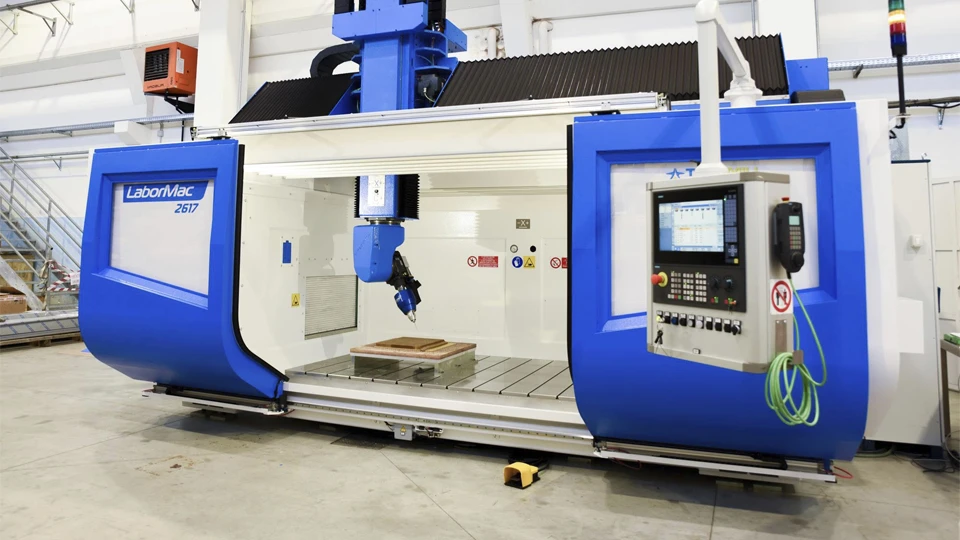
Measuring and Feedback System – The Accuracy Backbone
The measuring and feedback system is one of the main components of a CNC milling machine that ensures precision and repeatability in every machining operation. It provides real-time positional data to the controller, verifying that each axis moves exactly as programmed. Without accurate feedback, even the most rigid structure or advanced spindle cannot guarantee the level of precision modern industries demand.
This system typically includes linear scales, rotary encoders, and proximity sensors. Linear scales measure table and spindle movements along each axis with micron-level accuracy, while rotary encoders track motor rotations to calculate position and speed. These sensors continuously send feedback to the CNC controller, allowing it to correct any deviation or backlash instantly. Advanced cnc milling machine components may also use laser interferometers or temperature-compensated sensors to maintain accuracy under varying environmental conditions.
In high-performance machines, closed-loop feedback systems synchronize all axes for perfect contouring and smooth tool motion. This ensures dimensional consistency, superior surface quality, and reduced scrap rates. As one of the most crucial parts of a cnc milling machine, the measuring and feedback system forms the backbone of precision manufacturing—translating digital design into flawless physical results.
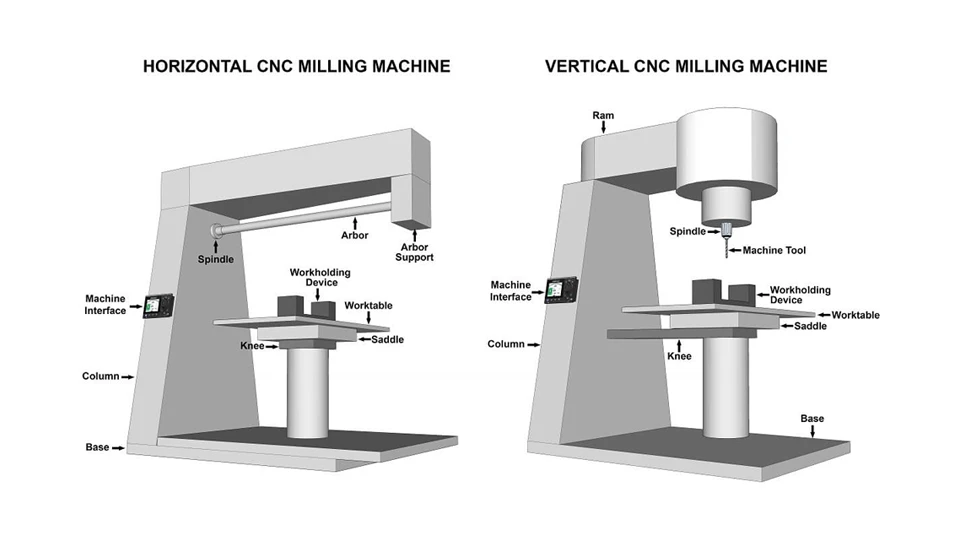
How These Parts Work Together
A CNC milling machine is not just an assembly of mechanical and electronic parts—it is a coordinated system in which every component influences the performance of the others. The structural elements provide rigidity, the drive mechanisms enable motion, the control unit interprets data, and the feedback system ensures precision. Only when these parts of a CNC milling machine operate in perfect harmony can true machining accuracy and efficiency be achieved.
The process begins when the CNC controller sends motion commands to the feed system, which moves the table and spindle simultaneously along multiple axes. At the same time, the measuring and feedback system tracks each movement, sending position data back to the controller for instant correction. The spindle, powered through the electrical cabinet, converts torque into cutting energy, while the coolant and lubrication system manage heat and friction. Each element works not in isolation, but as part of a feedback-driven loop that ensures balance between speed, stability, and precision.
This coordination has a direct impact on productivity and part quality. A rigid base without precise feedback still produces errors, while a fast spindle without proper cooling shortens tool life. Understanding how the main components of a CNC milling machine work together helps engineers evaluate machine performance more intelligently—selecting the right specifications, maintaining long-term accuracy, and improving overall return on investment.
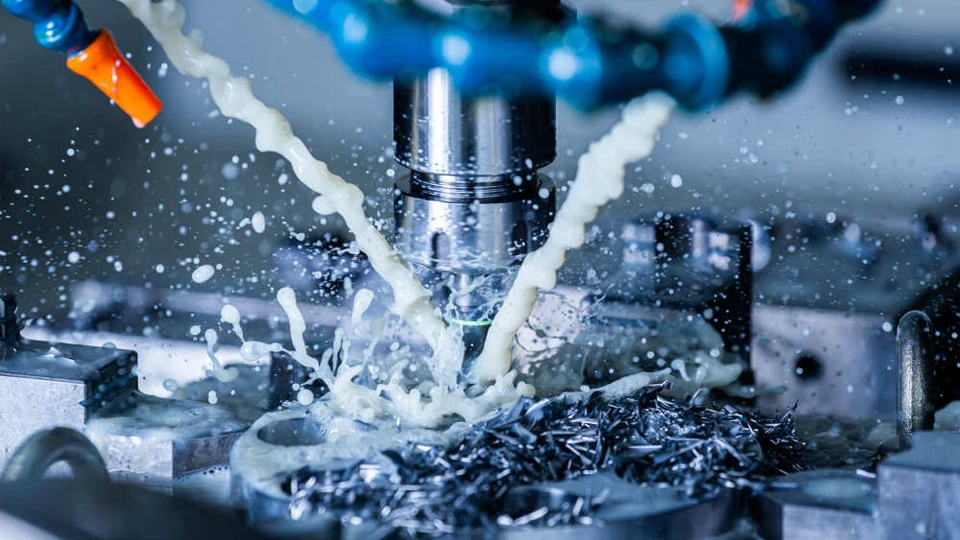
Conclusion
Every CNC milling machine is more than a collection of metal and motors—it’s a living system of precision, coordination, and purpose. Each part, from the sturdy base to the responsive feed drives and the intelligent controller, plays a vital role in turning digital design into real-world accuracy. Together, they embody what modern manufacturing truly stands for: consistency, craftsmanship, and control. Understanding these elements doesn’t just expand your technical knowledge—it gives you confidence when investing, operating, or improving your own production line.
At Rosnok, we live and breathe this balance between structure and precision. With every spindle we assemble, every feed system we align, and every control unit we calibrate, we bring this understanding into practice. Our mission is simple yet constant—to build CNC machines where every component performs in harmony, delivering stability, accuracy, and trust that last for years. When the parts work together perfectly, that’s when true engineering begins—and that’s the standard we pursue at Rosnok every single day.
